Differential transmission does magic ...
Well ... if there is 'differential transmission' (better known as 'balanced' or 'symmetrical'), what is the opposite?
The most simple (and cheapest) way to transfer a signal is a 'single-ended' transmission.
"But all my cables have two ends - what the heck is this 'single-ended' thing ??"
A 'single-ended' cable is a cable that has:
- Only one 'signal' wire ... and ...
- A 'ground' wire (always needed as reference)
Single-ended transmission is prone to every kind of electrical noise from the environment that can inflict the signal. This electrical 'noise' is coming from wall outlets, lighting equipment, other music equipment, elevators in the building, etc.
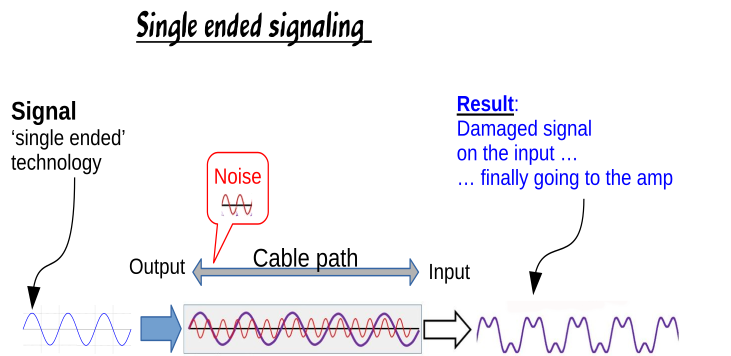
Using 'shielding' on such cables is a means to reduce outside electrical noises (hum & beep from the environment). But the point is, that all these noises can only be reduced to a certain extent - they cannot be eliminated when using 'single-ended' wiring...
On top, shielding makes a cheap technology expensive - and never gets the signal free of influencing noise even if 2-fold or 3-fold shielding is used which in turn makes the cable price just horrible ... still with doubtful results.
Single-ended cables are usually the cable types with
1/4-inch (6,35mm) jacks at the ends. But they also
come along as RCA (cinch) and many other shapes
and colors ...
These can be sufficient e.g. for electric guitars
that have a limited frequency response of about
7Khz in the treble-end.
Top-class acoustic guitars as they are made by
qualified luthiers or in 'custom shops' of factories
produce much higher frequencies in their
overtones that reach into the 12Khz range which
makes them 'precious' instruments with
sophisticated sound characteristics that a qualified
luthier or other qualified instrument maker has built
into the instrument.
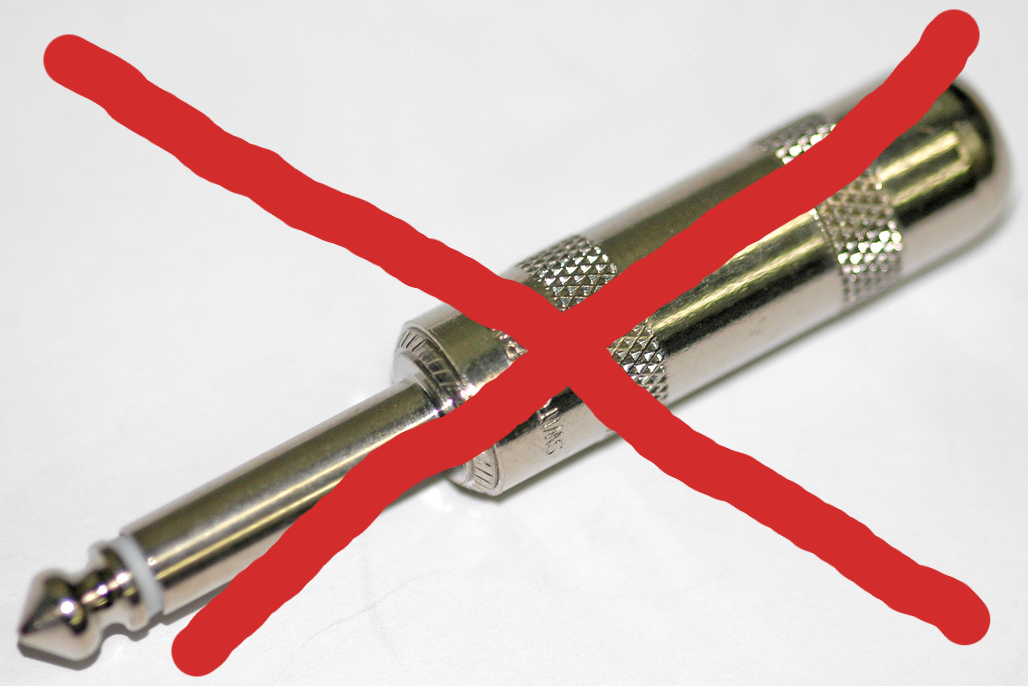
Telephone jack ... invented in the 1930'ies ...
Environmental noise that usually inflicts single-ended cables destroys (and replaces!) these sophisticated sound qualities of a high-grade instrument so that ...
... a 6000-dollar instrument can sound like a 20-dollar instrument from a flea market.
Ok then, what makes 'differential' (balanced/symmetrical) technology so different??
On a 'differential transmission path,' a magical trick is done: The signal is just output twice ...
- Signal +
- Signal -
- Ground (always needed for reference)
... whereas 'Signal-' is just the reversed (i.e. a 180° phase-shift) of the 'Signal+' - and this does the whole magic on the receiver side.
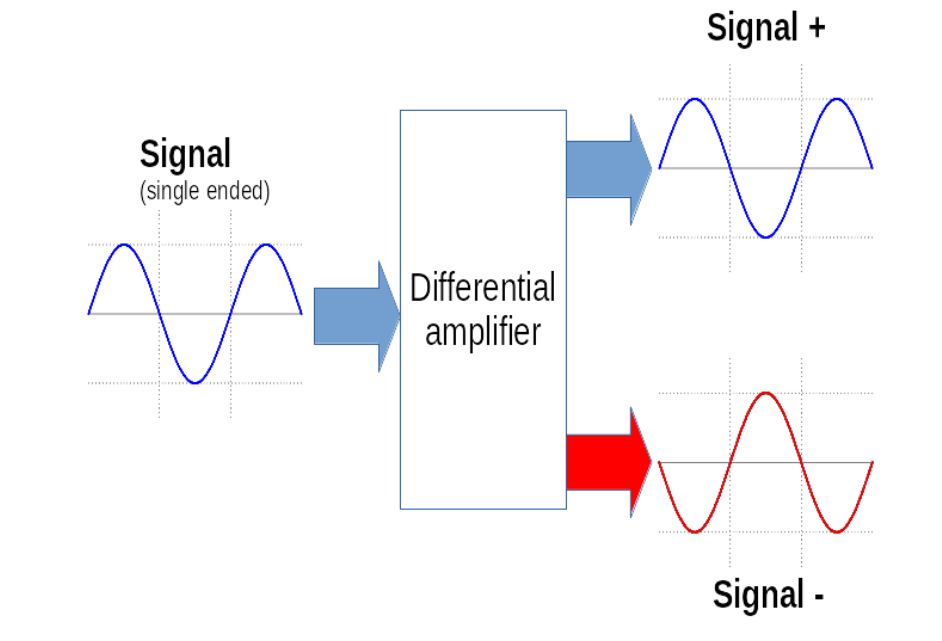
The magic is that every noise inflicting the signal on the cable path is automatically eliminated at the receiver.
This happens because the inflicting noise pulse(s) come in with the same phasis on both signal wires. This is seen by the differential receiver which expects a signal with the phasis reversed on the 'Signal -' wire otherwise signals with the same phasis would be "amplified to zero"; i.e. eliminated.
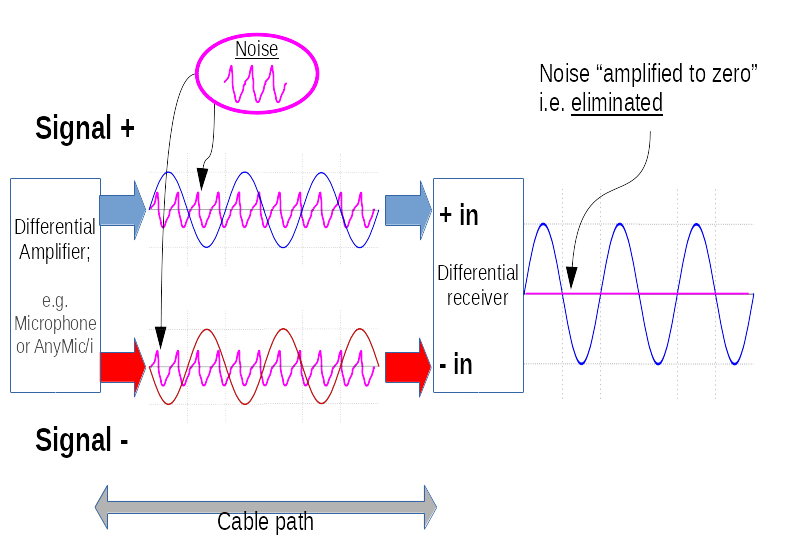
This is impossible with 'single-ended' wiring (e.g. the 1/4-inch/6.3mm jacks), where the incoming signal will always bear a certain level of noise, that is amplified in the further signal chain ... and this is finally coming out from your amp as amplified noise ...
Other benefits from differential transmission ...
Differential transmission virtually doubles the amplitude that is also shown in the picture above. This gets you a far better Signal-Noise-Ratio (SNR). It also results in a much crispier and clearer sound from the instrument.
Differential transmission technology (a.k.a 'balanced' or 'symmetrical')
usually uses XLR connectors along with XLR cables, since these have
enough pins and wires for a differential transmission.
For use in a pro-audio context the XLR connectors and XLR cables
should be equipped with a gold-plated contact material, since this will
preserve overtones the best with precious top-class instruments.
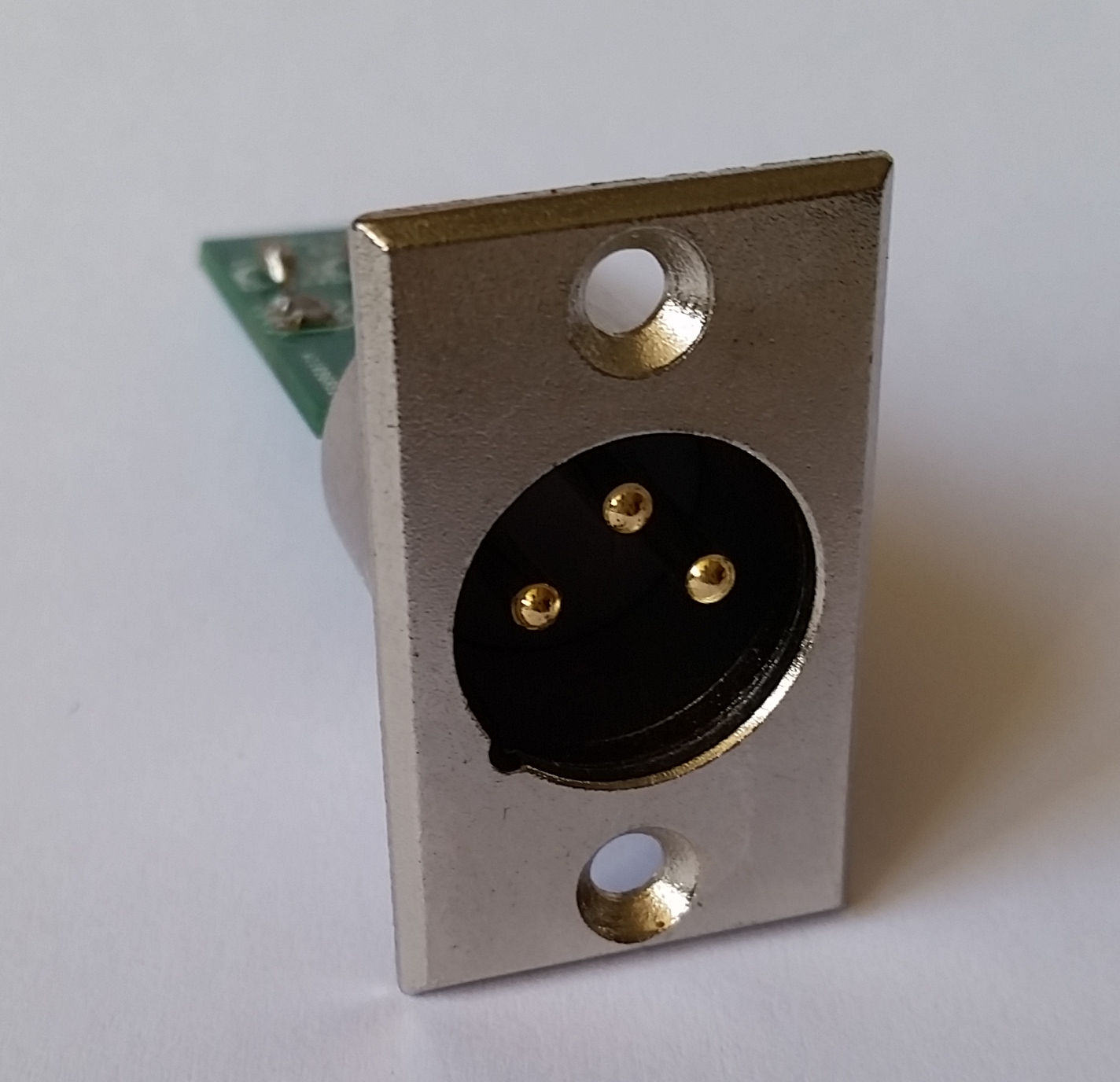
So what is the overall goal of 'differential transmission'?
Differential transmission preserves the integrity of the sound picked up from your instrument.
- Every electrical noise from the environment that inflicts the signal along the cable path is 'wiped out' at the receiver side - just like magic.
- The outcome from the cable (usually XLR; i.e. microphone cables) is exactly what the input was - with a virtual amplification factor of 2.
An AnyMic does not use the 'single-ended' technique for a good reason, since it is designed and engineered for top-class sound pickup and sound transmission for professionals with demands ...

